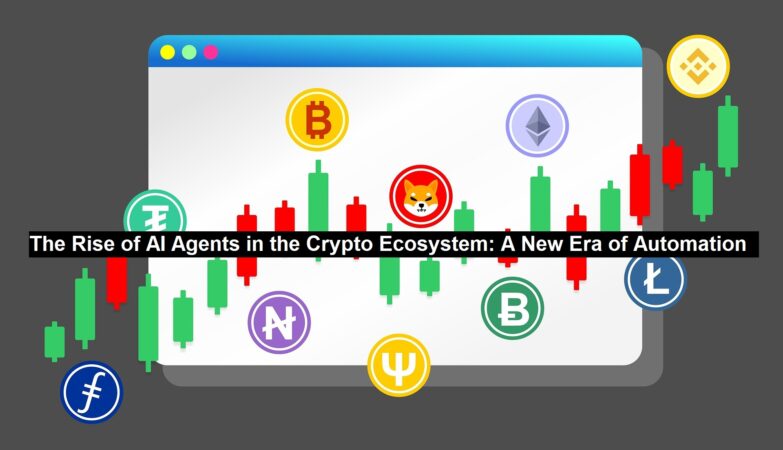| Table of Content |
| 1. Introduction 2. Umbraco Vs. Drupal: DefinitionWhat is Umbraco?What is Drupal? 3. Umbraco Vs. Drupal: FeaturesFeatures of UmbracoInfinite editingHeadless CMSMVC based architectureIntegrations and extensionsCloud and Azure support Features of DrupalScalability and flexibilityCustomization optionsMultilingual managementHigh-end securityCommunity support 4. Umbraco Vs. Drupal: Pros and ConsPros of UmbracoCons of UmbracoPros of DrupalCons of Drupal 5. Key Takeaway |
When choosing a perfect content management system for your project, there are many factors to consider in order to build a feature-rich website. Creating an out-of-the-box website with all the latest features is a head-to-head battle with competing options.
Currently, the two most trending CMS, Umbraco and Drupal, are gaining immense popularity compared to other similar platforms. But who will win the title of “The best CMS.”? Both platforms are free, flexible, user-friendly, and widely used by businesses to build a feature-perfect website. But when it comes to choosing a reliable CMS that suits your project requirements and helps you deliver the expected outcome, you might need clarification. Isn’t it? To ease your task, we are here to share everything you need to know about the two most popular CMS out there.
In this article, we will look at two leading content management systems, Umbraco, and Drupal, and let you quickly select a platform to build and manage your site.
Before we proceed, let us first revise the definitions of these CMS, and we are good to go!
Umbraco vs. Drupal: Definition
What is Umbraco?
Umbraco is a free, open-source, customizable, and easy-to-use content management system built on Microsoft Stack to help users create and manage content seamlessly. You will be surprised that Umbraco has over 700,000 active installs worldwide and around 200,000 active community members. It offers a variety of extensions and modules, allowing developers to add new features and functionalities based on their demands.
The Umbraco CMS provides an integrated workflow for creating intuitive editing, updating content, multi-device previews, and scheduled publishing. It helps programmers develop professional and feature-rich websites through its excellent feature offerings and ensures quicker content delivery through a network of servers.
Read: Shopping for Vintage Jewelry in America: A Guide
Now you must be wondering how all this can be implemented. This can be only possible if you have a dedicated developer who specifically focuses on building your project. We recommend hiring an Umbraco developer from a top-notch Umbraco development company to help you kick-start your project development journey.
What is Drupal?
Another great CMS platform that developers widely use is Drupal. It is a free, open-source, simple, and SEO-friendly content management system written in PHP that competes primarily with Joomla and Plone.
Drupal offers various built-in plugins and a great user interface for no-code database queries that keeps all the necessary plugins updated and maintained. Also, it enables marketing automation with advanced email reporting and streamlining data security protocol to help mitigate internet vulnerabilities.
Umbraco vs. Drupal: Features
Features of Umbraco
1. Infinite Editing
This feature is one of the main reasons why developers highly prefer working with Umbraco. It allows you to work with your content without losing the context of what you are doing, and we call this flawless workflow ‘Infinite editing.’ You can create pages by adding text via a WYSIWYG editor, upload, and crop images, and write great SEO titles and descriptions without leaving the current page you are working on. Choosing between Umbraco and Drupal for a project with GPS tracking software features depends on the trend toward real-time data visualization and API integrations. Also, content editors can edit two pieces of content simultaneously with visible live translation.
2. Headless CMS
Umbraco is a headless CMS providing creating, reading, updating, and deleting operations. With this, you get a backend and editor experience that has been efficiently tested and used for over 15 years by 7000,000 websites worldwide. Both Umbraco and Drupal offer integration with a wide range of most popular APIs, making choosing between them depend on specific project needs and preferred development language. If you are using Umbraco, embrace the headless feature, enhance the website’s security, manage content for multiple channels, scale easily, and get exclusive editing experiences.
3. MVC Based Architecture
Umbraco follows an MVC architectural pattern that ensures separation of concern and produces and maintains code and solutions. It runs on the latest .NET technology and meets standard conventions and patterns. So, if you are already aware of the .NET MVC, you will be at home with Umbraco.
4. Integrations and Extensions
Umbraco offers a wide range of extension and integration options for your CMS. You can use these extensions from the Umbraco Package Repository, with hundreds of free and paid packages allowing developers to add new features and functionalities to your website.
5. Cloud and Azure Support
You can install Umbraco on Umbraco’s own cloud infrastructure or install it independently on an Azure instance. We recommend implementing a safe development and publishing environment for all Umbraco installations for which you need a local developer instance, a live site server instance, a staging server instance, and a development server instance.
Features of Drupal
1. Scalability and Efficiency
Drupal’s scalability allows developers to handle enormous amounts of content, making it an ideal CMS for large and content-rich websites. Also, its efficiency is well-known. It does not matter whether your website is regularly visited or gains significant traffic peaks occasionally; it still caches features, ensuring fast loading. Choosing the right product for export between Umbraco and Drupal depends on factors like project complexity, budget, and desired features, as both excel in different areas.
2. Customization Options
The customization feature of Drupal is popular among developers as it offers a variety of options, such as modules, hooks, themes, blocks, and views. With this, you can modify and enhance the functionality of your website, allowing developers to write custom code and create custom solutions.
3.Multilingual Management
If you are planning to deliver content in multiple languages and looking for a CMS that makes language variants easy to manage and aligns with your multi-location and multilingual SEO requirements. In that case, Drupal is a perfect solution for you.
4. High-end Security
One of the main concerns for many businesses is security. But if you choose to work with Drupal, you are not required to worry about security breaches. Drupal ensures that all data, including customer data, is always safe.
5. Community Support
Drupal has active community support that involves documentation creation, sharing networking opportunities, and much more. It is one of the largest open-source communities in the world, with 1300 agencies providing Drupal services and around 3200 contributors working to improve the platform.
Umbraco vs. Drupal: Pros and Cons
Pros of Umbraco
- Umbraco is a flexible yet powerful CMS that helps developers to create various websites based on unique needs.
- Developers highly prefer using Umbraco due to its high scalability and user-friendly nature.
- It is an open-source platform with active community support who are constantly working to improve it.
- With the drag-and-drop editor, content editors can easily add and edit content.
- You can efficiently use Umbraco even if you are a beginner because it is easy to use.
- Offers high-end security to prevent your site from attackers.
- If you are a startup with a limited budget, you can choose Umbraco, as it is one of the most reliable and affordable choices.
Cons of Umbraco
- Umbraco is slow from content editing and front-end user perspective.
- It can limit your content’s creativity and originality.
- You might experience errors and deployment failures.
Pros of Drupal
- Drupal is an open-source, flexible, and user-friendly content management system.
- It is highly customizable, allowing you to easily edit and manage content using the node module.
- A team of security experts focusing on fixing complex vulnerabilities is highly secure.
- Apart from being secure and flexible, it is also a scalable and future-proof CMS platform.
Cons of Drupal
- It has high system requirements
- Lack of high-quality designs
- The learning curve is steep and large
- Excessive memory consumption
- It is overly complex compared to Umbraco
- Time-consuming and expensive to develop
- It is hardware-intensive so you might face performance and speed issues.
Key Takeaway
Umbraco and Drupal are both great CMS platforms having different strengths and weaknesses. So, choosing the right CMS depends on your specific project requirements. To help you easily choose a reliable platform, we have mentioned every detail about Umbraco and Drupal.
Now, who is the winner in the battle of best CMS? Isn’t it? As mentioned earlier, both are great platforms, but you must first identify your project needs and then move further because both platforms have pros and cons.
As a leading website development company with 12+ years of experience, The One Technologies highly recommend using the Umbraco CMS because it is a scalable platform, manages many pages from a content administrator perspective, offers a powerful built-in search engine, and provides commercial support to its users when needed. After reading this post, if you consider Umbraco for your upcoming project, then get the best Umbraco development services from us and start your project today!








